Ice Read online
Page 4
Hal Willis came back into the squadroom some five minutes later, just as a windblown and frostbitten patrolman from Midtown East was delivering the packet promised by Levine when he’d first spoken to Carella earlier this morning. Willis spotted Eileen sitting on the edge of his desk, smiled, and virtually tap-danced over to her. Grinning, he said, “Hey, they sent you, huh?”
“Here’s that stuff from Levine,” Carella said to Meyer.
“You were hoping for Raquel Welch maybe?” Eileen said.
“Who’s complaining?” Willis said.
“Who raped who this time?” Eileen asked.
“Don’t talk dirty in my squadroom,” Meyer said, and winked at Carella.
“Looks very thin,” Carella said, hefting the yellow manila envelope he had just signed for.
“That it?” the patrolman asked, rubbing his hands together.
“That’s it,” Carella said.
“Anyplace I can get a cup of coffee here?” the patrolman asked.
“There’s a machine downstairs in the swing room,” Carella said.
“I got no change,” the patrolman said.
“Oh, the old Got-No-Change Ploy,” Meyer said.
“Huh?” the patrolman said.
“Try the Clerical Office down the hall,” Carella said.
“Is your insurance paid up?” Meyer said.
“Huh?” the patrolman said, and shrugged, and went down the hall.
“Where do you want to discuss this?” Willis asked Eileen.
“Oh, the old Your-Place-Or-Mine Ploy,” Meyer said. He was feeling terrific! He had just delivered a baby! There was nothing like collaborating in an act of creation to make a man feel marvelous! “Is this the Laundromat case?” he asked Willis.
“It’s the Laundromat case,” Willis said.
“A rapist in a Laundromat?” Eileen asked, and stubbed out her cigarette.
“No, a guy who’s been holding up Laundromats late at night. We figured we’d plant you in the one he’s gonna hit next—”
“How do you know which one he’ll hit next?” Eileen asked.
“Well, we’re guessing,” Willis said. “But there’s sort of a pattern.”
“Oh, the old Modus-Operandi Ploy,” Meyer said, and actually burst out laughing. Carella looked at him. Meyer shrugged and stopped laughing.
“Dress you up like a lady with dirty laundry,” Willis said.
“Sounds good to me,” Eileen said. “You’re the backup, huh?”
“I’m the backup.”
“Where will you be?”
“In a sleeping bag outside,” Willis said, and grinned.
“Sure,” she said, and grinned back.
“Remember?” he said.
“Memory like a judge,” she said.
“We’ll leave you two to work out your strategy,” Meyer said. “Come on, Steve, let’s use the interrogation room.”
“When do we start?” Eileen asked, and lit another cigarette.
“Tonight?” Willis said.
In the interrogation room down the hall, Meyer and Carella studied the single sheet of paper that had been in the envelope Levine sent them:
Complainant Dominick Bonaccio discovered victim lying on her back in the snow at 12:30 AM on his way home from work. Recognized her from the coat she was wearing. Went up to his apartment, called 911, went down stairs again to wait for responding police officers. (P. 0. Frank O’Neal, P.O. Peter Nelson. Midtown East, Charlie Car.) Victim D.O.A. on arrival. Officer O’Neal radioed dispatcher, requesting detectives on scene. (See Activity report 1375-61-0230) Homicide detectives (Monoghan and Monroe)cruising area, responded to call, arrived at scene before M.E. Detectives Henry Levine and Ralph Coombes.
Victim identified as SALLY ANDERSON, white female, age 25. Hair blonde. Eyes blue. Pending exact autopsy measurements, height appears five-feet eight-inches, weight approximately one twenty-five. Assistant M.E. David Lowenby pronounced victim dead at scene, apparent cause of death gunshot wounds. Pending autopsy report, wounds appear to be three: one in leftside of chest, two in face. No spent shell casings recovered at scene. Contents girl’s handbag: lipstick, eyebrow pencil, two sticks chewing gum, address book. Kleenex tissues, wallet with three photographs, twenty-three dollars U.S. currency. Actors Equity 1.0. card. Canvas of tenants 637 North Campbell no eye witnesses, but statements victim was a dancer employed in a musical called “Fatback,” Hales Theater. 1134 North Adderley.
Body sent to Haley Hospital Morgue. Personal effects in possession Midtown East for transfer to Laboratory. Ballistics section informed BOLO for any bullets recovered from body during autopsy, early report requested.
Detective (1st/Gr) Henry Levine
Shield #27842 (Midtown East)
“He types neat,” Meyer said.
“Not much here though,” Carella said.
“This must’ve been before he got that call from Dorfsman, huh?”
“Got fast action with his BOLO,” Carella said.
“Let’s see what we’ve got on the other one,” Meyer said.
In the Clerical Office, Alf Miscolo was brewing the city’s worst coffee. Its strong aroma assailed their nostrils the moment they stepped into the room.
“Halloween has come and gone,” Meyer said.
“What’s that supposed to mean?” Miscolo said.
“You can stop throwing newts and frogs in your coffeepot.”
“Ha-ha,” Miscolo said. “You don’t like it, don’t drink it.” He sniffed the air. “This is a new Colombian blend,” he said, and rolled his eyes appreciatively.
“Your coffee smells just like Meyer’s cigars,” Carella said.
“I give him all my old butts,” Meyer said, and then realized his cigars were being attacked. “What do you mean?” he said. “What’s the matter with my cigars?”
“Did you come in here to waste my time, or what?” Miscolo said.
“We need the file on Paco Lopez,” Carella said.
“That was only a few days ago, wasn’t it?”
“The homicide on Culver,” Carella said, nodding. “Tuesday night.”
“It ain’t filed yet,” Miscolo said.
“So where is it?”
“Here on my desk someplace,” Miscolo said, and gestured toward the wilderness of unfiled reports covering its top.
“Can you dig it out?” Carella said.
Miscolo did not answer. He sat in the swivel chair behind the desk and began sorting out the reports. “My wife gave me that coffee for Valentine’s Day,” he said, sulking.
“She must love you a lot,” Meyer said.
“What’d your wife give you?”
“Valentine’s Day isn’t till tomorrow.”
“Maybe she’ll give you some terrific cigars,” Carella said. “Like the ones you’re already smoking.”
“Here’s a Gofredo Lopez, is that who you’re looking for?”
“Paco,” Carella said.
“There’s nothing wrong with my cigars,” Meyer said.
“You know how many Lopezes we got up here in the Eight-Seven?” Miscolo said. “Lopez up here is just like Smith or Jones in the real world.”
“Only one Lopez got shot last Tuesday,” Carella said.
“I sometimes wish all of them would,” Miscolo said.
“Give them a sip of your coffee instead,” Meyer said. “Do ‘em in as sure as a sawed-off shotgun.”
“Ha-ha,” Miscolo said. “Paco, where the hell’s Paco?”
“When are you going to get around to filing all this stuff?” Meyer said.
“When I get around to it,” Miscolo said. “If all our upstanding citizens out there would stop shooting each other, and robbing each other, and stabbing each other—”
“You’d be out of a job,” Carella said.
“Shove the job,” Miscolo said. “I’ve had the job up to here. Three more years, I’ll be out of it. Three more years, I’ll be living in Miami.”
“No crime at all down th
ere in Miami,” Meyer said.
“Nothing that’ll bother me,” Miscolo said. “I’ll be out on my boat fishing.”
“Don’t forget to take your coffeepot with you,” Meyer said.
“Here it is,” Miscolo said. “Paco Lopez. Bring it back when you’re finished with it.”
“So you can file it next Friday,” Meyer said.
“Ha-ha,” Miscolo said.
In the late-morning stillness of the squadroom, they looked over the sheaf of papers on Paco Lopez. The shooting had taken place last Tuesday night, a bit more than seventy-three hours before Sally Anderson was killed with the same gun half a city away. The girl’s body had been found at 12:30 A.M. on the morning of the thirteenth; Paco Lopez had been killed at 11:00 P.M. on the night of the ninth. The dead girl had been twenty-five years old, a white female, gainfully employed. Lopez had been nineteen, a Hispanic male, with one previous arrest for possession of narcotics with intent to sell; he had gotten off with a suspended sentence because he’d been only fifteen at the time. When they’d gone through his pockets on Tuesday night, they’d found six grams of cocaine and a rubber-banded roll of $100 bills totaling $1,100. Sally Anderson’s wallet had contained $23. There seemed very little connection between the two victims. But the same gun had been used in both slayings.
The supplementary reports on Lopez confirmed that he’d continued dealing drugs after his initial bust; his street name was El Snorto. No such word existed in the Spanish language, but the Hispanic residents in the 87th Precinct were not without their own wry sense of humor. The people Carella and Meyer had interrogated and interviewed all seemed to agree that Paco Lopez was a mean son of a bitch who’d deserved killing. Many of them suggested alternate means of death slower and more painful than the two .38 caliber bullets that had been fired into his chest at close range. One of his previous girlfriends unbuttoned her blouse for the detectives and showed them the cigarette burns Lopez had left as souvenirs on both her breasts. Even Lopez’s mother seemed to agree (although she’d crossed herself when she admitted this) that the world would be much better off without the likes of her son around.
A round-up of known gram dealers had brought up the information that Lopez was truly a small-time operator, something slightly higher than a mule in the hierarchy of cocaine “redistribution”—as one of the dealers euphemistically called it. Lopez had enjoyed a small following of users whom he’d supplied on a modest basis, but if he pulled down ten, twelve bills a week, that was a lot. Listening to this, Meyer and Carella, who each and separately pulled down only twenty bills a month, wondered if perhaps they were not in the wrong profession. All of these more successful dealers agreed that Lopez hadn’t even been worth killing. He was a threat to nobody, operating as he was on the fringes of gram-dealer society. They all figured some angry cokie had iced him. Maybe Lopez got fancy, started cutting his stuff too fine in an attempt to get more mileage out of the dust, and maybe an irate user had put the blocks to him. As simple as that. But how did a cocaine murder tie in with Sally Anderson?
“You know what I wish?” Carella said.
“What?”
“I wish we hadn’t inherited this one.”
But they had.
The superintendent of Sally Anderson’s building on North Campbell Street was not happy to see them. He had been awakened at close to 1:00 in the morning and interrogated by two other detectives, and he had not been able to fall asleep again till almost 2:30, and then he’d had to get up at 6:00 to put out the garbage cans before the Sanitation Department trucks arrived, and then he’d had to shovel the sidewalk in front of the building clear of snow, and now it was ten minutes to 12:00, and he was hungry, and he wanted his lunch, and he didn’t want to be talking to two more detectives when he hadn’t even seen what happened and hardly knew the girl from a hole in the wall.
“All I know is she lives in the building,” he said. “Her name’s Sally Anderson, she lives in apartment 3-A.” He kept using the present tense when referring to her, as though her death had never happened, and even if it had was of small consequence to him—which was the truth.
“Did she live here alone?” Carella asked.
“Far as I know.”
“What does that mean?”
“These girls today, who knows who they live with? A guy, two guys, another girl, a cat, a dog, a goldfish—who knows, and who cares?”
“But as far as you know,” Meyer said patiently, “she was living here alone.”
“As far as I know,” the super said. He was a gaunt and graying man who had lived in this city all his life. There were burglaries day and night in this building and in all the other buildings he’d ever worked in over the years. He was no stranger to violence, and had little patience with the minor details of it.
“Mind if we take a look at the apartment?” Carella asked.
“Makes no matter to me,” the super said, and led them upstairs, and unlocked the door for them.
The apartment was small and furnished eclectically, modern pieces and antiques rubbing elbows side by side, throw pillows on the black leather sofa and the carpeted floor surrounding it, framed three-sheets from various shows, including the current hit Fatback, hanging on all the walls. There were several framed professional photographs of the girl in ballet tights, in various ballet positions, hanging on the wall outside the bathroom. There was a poster for the Sadler’s Wells Ballet. There was a bottle of white wine on the kitchen counter. They found her appointment calendar near the telephone in her bedroom, on a night table alongside a king-sized bed covered with a patchwork quilt.
“Did you call the lab?” Meyer asked.
“They’re through here,” Carella said, nodding, and picked up the appointment calendar. It was one of those large, spiral-bound books that, when opened, showed each separate day at a glance. A large, orange-colored, plastic paper clip allowed the calendar to fall open easily to the twelfth of February. Meyer took out his notebook and began listing her daily appointments since the beginning of the month. He had come through Thursday, February 4, when the doorbell rang. Both detectives looked at each other. Carella went to the door, half expecting the super would be standing out there in the hall, asking for a search warrant or something.
The girl outside the door looked at Carella and said, “Oh.”
She looked at the numeral on the door as if somehow she’d made a mistake, and then she frowned. She was a tall, lissome Oriental girl, perhaps five nine or five ten, with midnight black hair and slanted eyes the color of loam. She was wearing a black ski parka over blue jeans tucked into knee-high black boots. A yellow watch cap was tilted saucily over one brow. A long yellow-and-black muffler hung loose over the front of the parka.
“Do I know you?” she asked.
“I don’t think so,” Carella said.
“Where’s Sally?” she asked, and peered past him into the apartment. Meyer had come out of the bedroom and stood in the living room now, within her frame of vision. Both men were still wearing overcoats. She glanced briefly at Meyer, and then looked back at Carella again.
“What is this?” she said. “What’s going on here?”
She backed away a pace, and then quickly glanced over her shoulder toward the elevator. Carella knew just what she was thinking. Two strangers in overcoats, no sign of her girlfriend Sally—she was interrupting a burglary in progress. Before she could panic, he said, “We’re policemen.”
“Oh, yeah?” she said skeptically, and glanced again toward the elevator.
A native, Carella thought, and almost smiled.
He took a small leather case from his pocket, and opened it to show his shield and his ID card. “Detective Carella,” he said, “87th Squad. This is my partner, Detective Meyer.”
The girl bent to look at the shield. She bent from the waist, her legs and her back stiff. A dancer, he thought. She straightened up again and looked him dead in the eye.
“What’s the matter?’ she said. “Where’s Sall
y?’
“Can you tell us who you are, please?” Carella asked.
“Tina Wong. Where’s Sally?”
Carella hesitated.
“What are you doing here, Miss Wong?” he said.
“Where’s Sally?” she said again, and moved past him into the apartment. She was obviously familiar with the place; she went first into the kitchen and then the bedroom and then came back into the living room, where the two detectives were waiting. “Where is she?” she said.
“Was she expecting you, Miss Wong?” Carella asked.
The girl did not answer him. Her eyes were beginning to reflect the knowledge that something was wrong. They darted nervously in her narrow face, moving from one detective to the other. Carella did not want to tell her, not yet, that Sally Anderson was dead. The story had not made the morning’s papers, but it was certain to be in the afternoon editions, on the newsstands by now. If she already knew Sally was dead, Carella wanted the information to come from her.

 Alice in Jeopardy: A Novel
Alice in Jeopardy: A Novel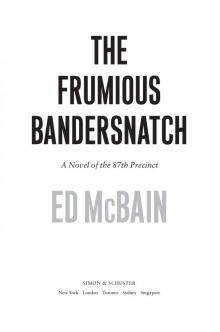 The Frumious Bandersnatch
The Frumious Bandersnatch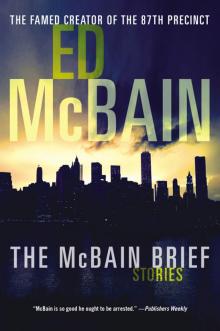 The McBain Brief
The McBain Brief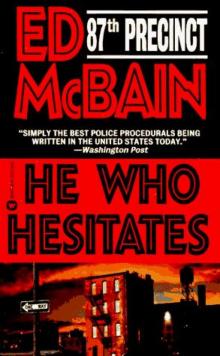 He Who Hesitates
He Who Hesitates Mischief
Mischief Fat Ollie's Book: A Novel of the 87th Precinct
Fat Ollie's Book: A Novel of the 87th Precinct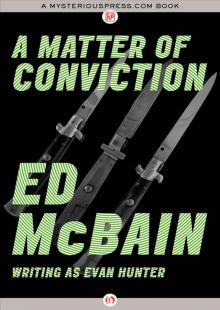 A Matter of Conviction
A Matter of Conviction Ice
Ice Even the Wicked
Even the Wicked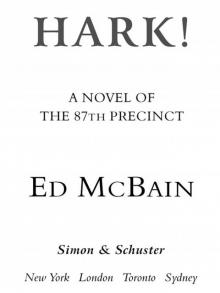 Hark!
Hark!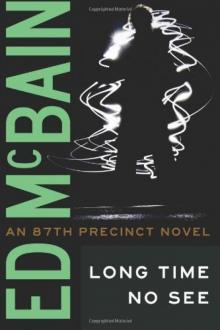 Long Time No See
Long Time No See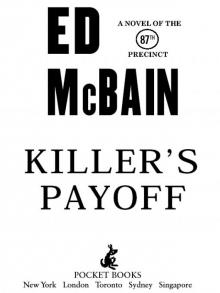 Killer's Payoff
Killer's Payoff Murder in the Navy
Murder in the Navy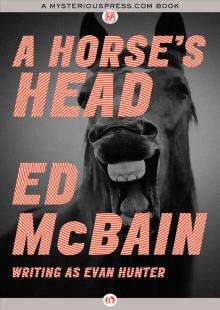 A Horse’s Head
A Horse’s Head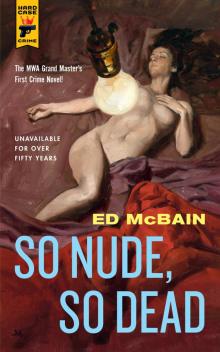 So Nude, So Dead
So Nude, So Dead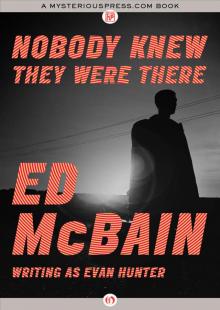 Nobody Knew They Were There
Nobody Knew They Were There Alice in Jeopardy
Alice in Jeopardy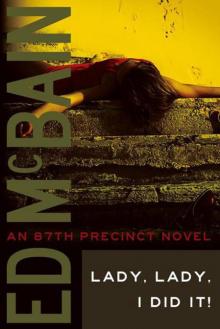 87P14-Lady, Lady, I Did It!
87P14-Lady, Lady, I Did It!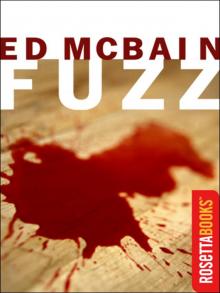 Fuzz
Fuzz Jack and the Beanstalk (Matthew Hope)
Jack and the Beanstalk (Matthew Hope)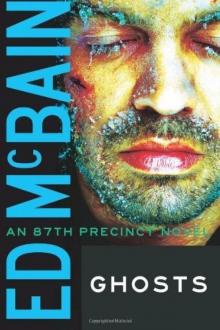 Ghosts
Ghosts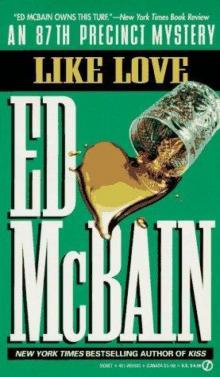 Like Love
Like Love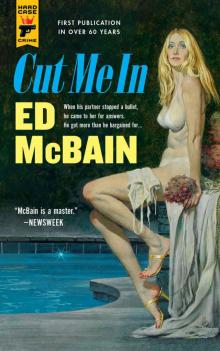 Cut Me In (Hard Case Crime)
Cut Me In (Hard Case Crime)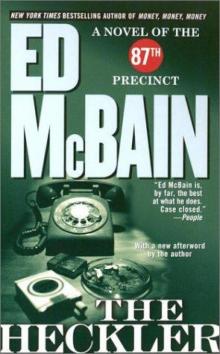 The Heckler
The Heckler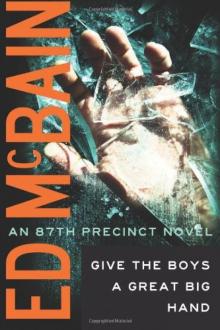 Give the Boys a Great Big Hand
Give the Boys a Great Big Hand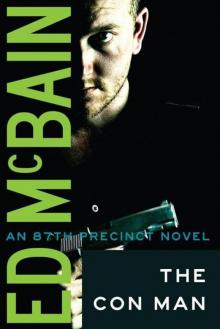 The Con Man
The Con Man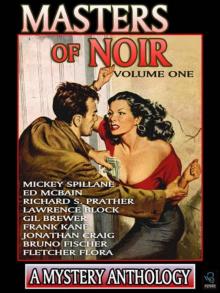 Masters of Noir: Volume One
Masters of Noir: Volume One Money, Money, Money
Money, Money, Money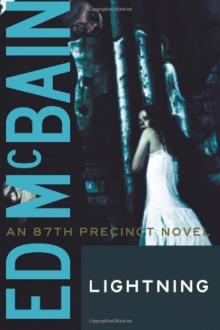 Lightning
Lightning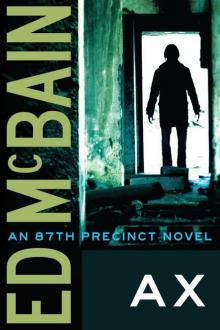 Ax
Ax The Spiked Heel
The Spiked Heel Scimitar
Scimitar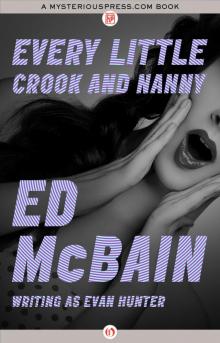 Every Little Crook and Nanny
Every Little Crook and Nanny Criminal Conversation
Criminal Conversation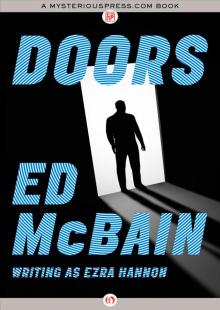 Doors
Doors The Jungle Kids
The Jungle Kids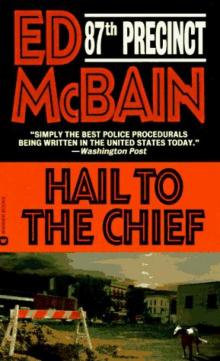 Hail to the Chief
Hail to the Chief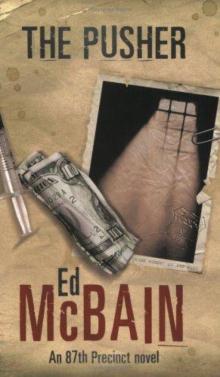 Pusher
Pusher Killer's Choice
Killer's Choice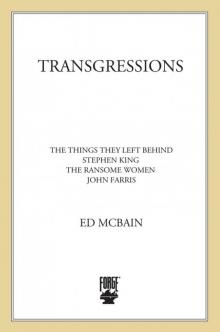 Transgressions Volume 2
Transgressions Volume 2 King's Ransom
King's Ransom The Last Dance
The Last Dance Fiddlers
Fiddlers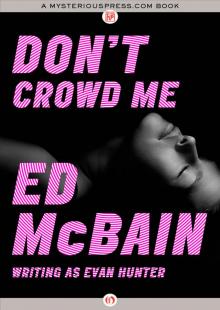 Don’t Crowd Me
Don’t Crowd Me Cinderella
Cinderella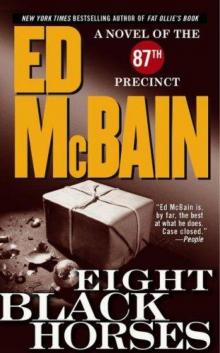 Eight Black Horses
Eight Black Horses Big Man
Big Man Vanishing Ladies
Vanishing Ladies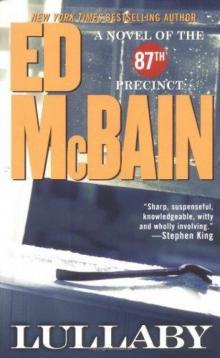 Lullaby
Lullaby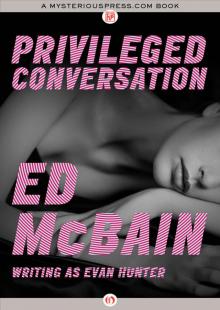 Privileged Conversation
Privileged Conversation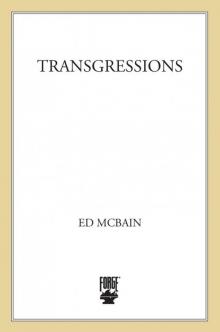 Transgressions, Volume 4
Transgressions, Volume 4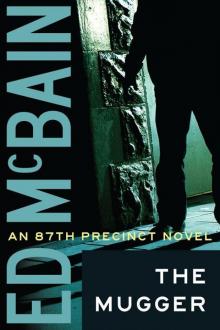 The Mugger
The Mugger Tricks
Tricks Shotgun (87th Precinct)
Shotgun (87th Precinct) Hail, Hail, the Gang's All Here!
Hail, Hail, the Gang's All Here!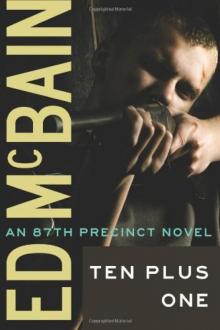 Ten Plus One
Ten Plus One Fat Ollie's Book
Fat Ollie's Book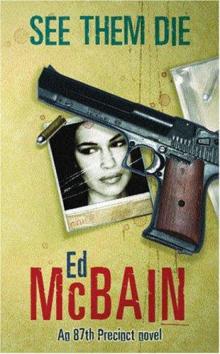 See Them Die
See Them Die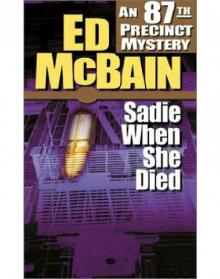 Sadie When She Died
Sadie When She Died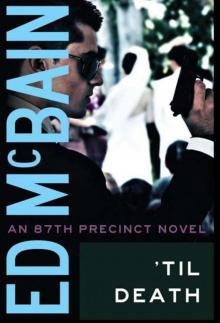 Til Death
Til Death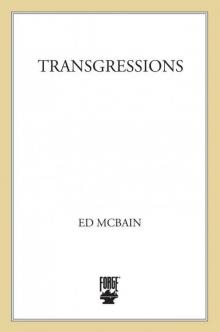 Transgressions Vol. 3: Merely Hate/Walking the Line/Walking Around Money
Transgressions Vol. 3: Merely Hate/Walking the Line/Walking Around Money And All Through the House
And All Through the House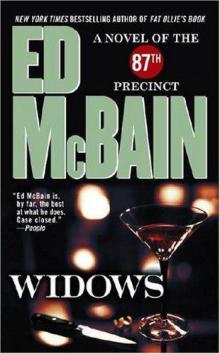 Widows
Widows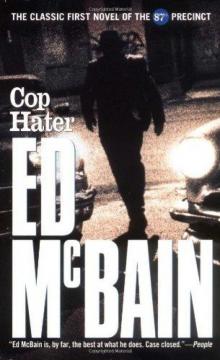 Cop Hater
Cop Hater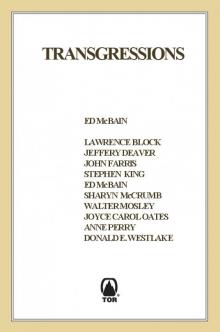 Transgressions
Transgressions